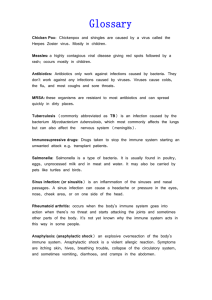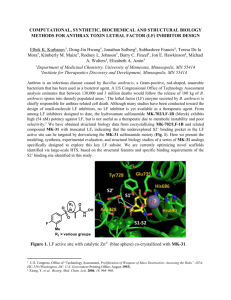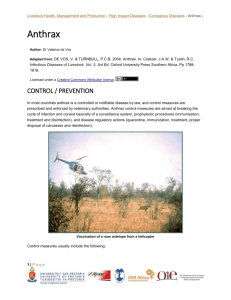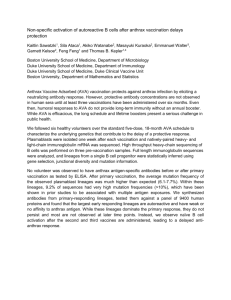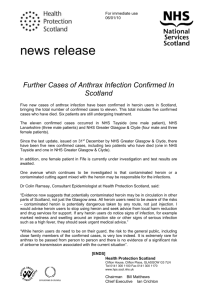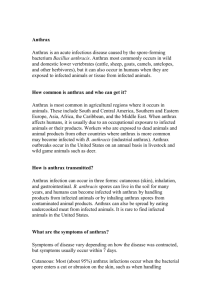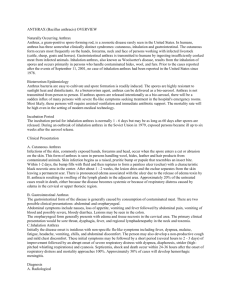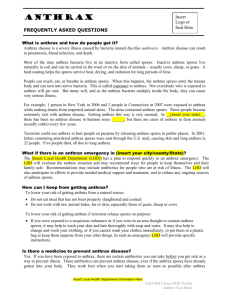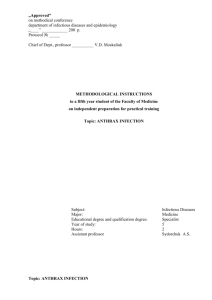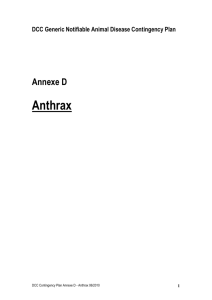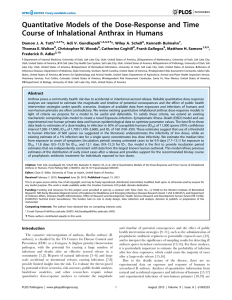ANTHRAX - Alpine Animal Hospital
advertisement
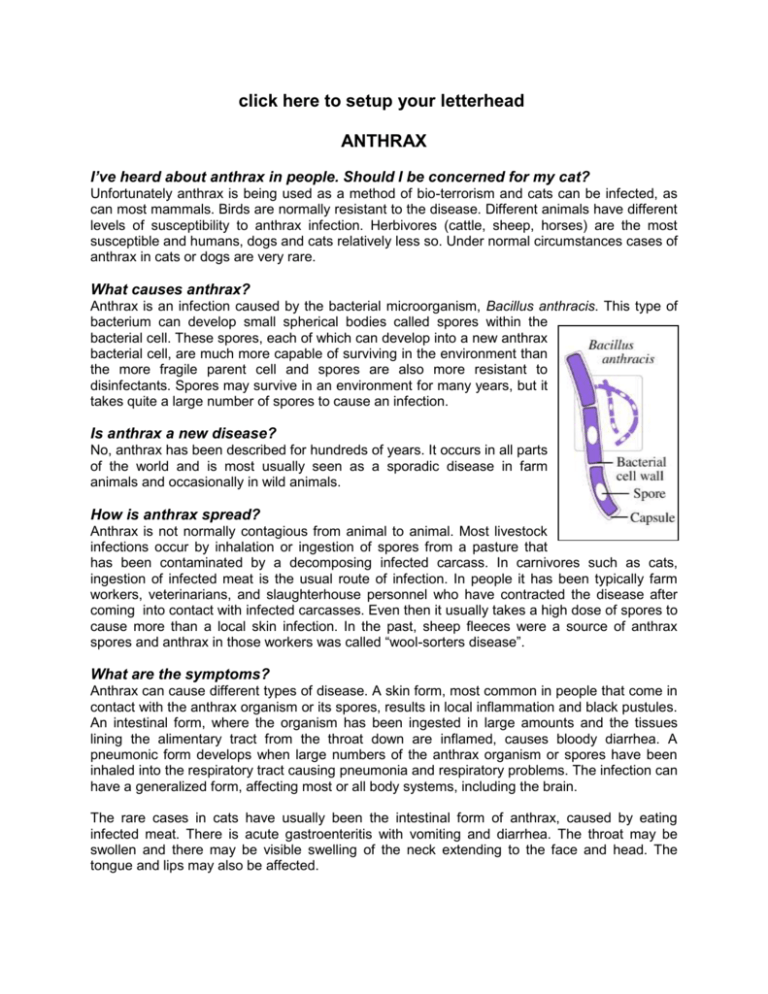
click here to setup your letterhead ANTHRAX I’ve heard about anthrax in people. Should I be concerned for my cat? Unfortunately anthrax is being used as a method of bio-terrorism and cats can be infected, as can most mammals. Birds are normally resistant to the disease. Different animals have different levels of susceptibility to anthrax infection. Herbivores (cattle, sheep, horses) are the most susceptible and humans, dogs and cats relatively less so. Under normal circumstances cases of anthrax in cats or dogs are very rare. What causes anthrax? Anthrax is an infection caused by the bacterial microorganism, Bacillus anthracis. This type of bacterium can develop small spherical bodies called spores within the bacterial cell. These spores, each of which can develop into a new anthrax bacterial cell, are much more capable of surviving in the environment than the more fragile parent cell and spores are also more resistant to disinfectants. Spores may survive in an environment for many years, but it takes quite a large number of spores to cause an infection. Is anthrax a new disease? No, anthrax has been described for hundreds of years. It occurs in all parts of the world and is most usually seen as a sporadic disease in farm animals and occasionally in wild animals. How is anthrax spread? Anthrax is not normally contagious from animal to animal. Most livestock infections occur by inhalation or ingestion of spores from a pasture that has been contaminated by a decomposing infected carcass. In carnivores such as cats, ingestion of infected meat is the usual route of infection. In people it has been typically farm workers, veterinarians, and slaughterhouse personnel who have contracted the disease after coming into contact with infected carcasses. Even then it usually takes a high dose of spores to cause more than a local skin infection. In the past, sheep fleeces were a source of anthrax spores and anthrax in those workers was called “wool-sorters disease”. What are the symptoms? Anthrax can cause different types of disease. A skin form, most common in people that come in contact with the anthrax organism or its spores, results in local inflammation and black pustules. An intestinal form, where the organism has been ingested in large amounts and the tissues lining the alimentary tract from the throat down are inflamed, causes bloody diarrhea. A pneumonic form develops when large numbers of the anthrax organism or spores have been inhaled into the respiratory tract causing pneumonia and respiratory problems. The infection can have a generalized form, affecting most or all body systems, including the brain. The rare cases in cats have usually been the intestinal form of anthrax, caused by eating infected meat. There is acute gastroenteritis with vomiting and diarrhea. The throat may be swollen and there may be visible swelling of the neck extending to the face and head. The tongue and lips may also be affected. How can anthrax be treated? The anthrax bacterium is susceptible to a number of antibiotics. Currently the antibiotic of choice in humans is “cipro” (ciprofloxacin). Treatment is highly effective in the early stages of infection. Can my cat be vaccinated against anthrax? There is currently no commercial anthrax vaccine available for cats or dogs although a number of vaccines of varying effectiveness have been produced starting with the pioneer work of Louis Pasteur in the 1880’s. Vaccines have been used in some parts of the world for domestic livestock and for humans employed in high-risk occupations. This client information sheet is based on material written by Ernest Ward, DVM © Copyright 2005 Lifelearn Inc. Used with permission under license. February 17, 2016


